How To Smoke A Brisket
On May 16, 2023
This post may contain affiliate links. Please read our disclosure policy.
Want to learn how to smoke a brisket? It doesn’t have to be intimidating if you have the knowledge. Let’s dive in and I’ll give you step-by-step instructions on how to smoke a brisket and make it perfect every time!
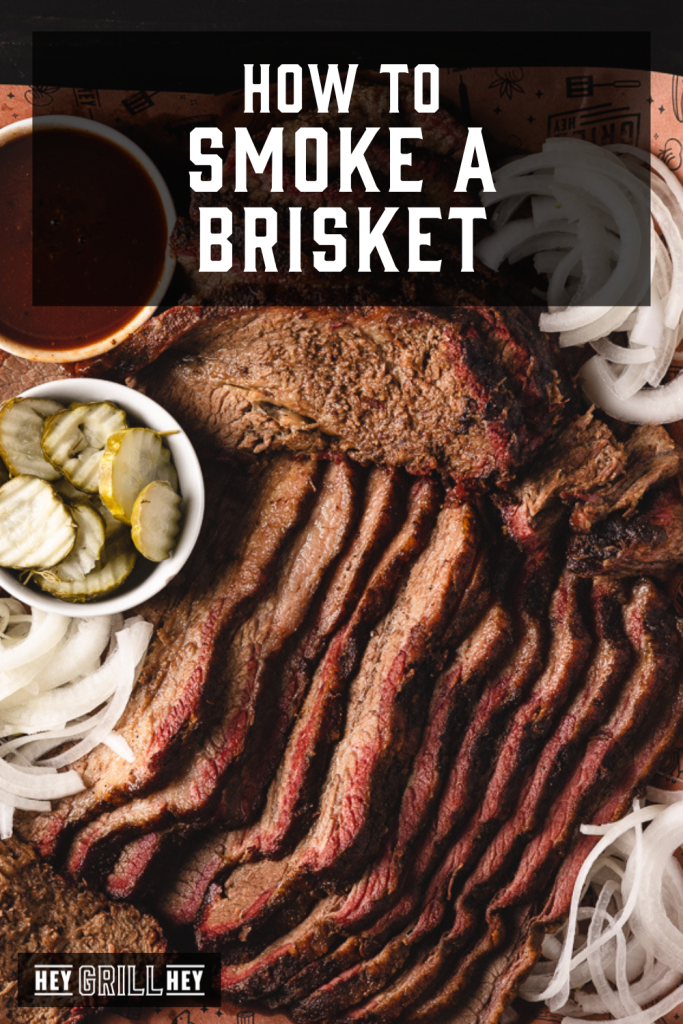
How to Smoke a Brisket
Before we are ready to jump into the cooking process, I hope you take a chance to brush up on your brisket knowledge. This post is part 3 in a 4-part series, so take a moment to peruse my informational post called Brisket 101. Then head over to my 2nd post, How To Trim a Brisket. If you’ve read them both, then consider yourself prepared for the knowledge bombs about to be dropped in today’s post, How To Smoke a Brisket! This set of instructions is for a whole, 12-14 pound brisket.
I am going to fill you in on a wide base of information that will set you on the path to smoking the perfect brisket. I’ll give you all of the little details that make a big difference when it comes to smoking an amazing brisket, and then you are going to try them out on your own. Once you have dialed in the basics, you can start the process of adding in your own flair, flavors, and techniques. There is enough information about how to smoke a brisket to fill several volumes, but I’ll try my best to break down my steps for you. I want you to make better-than-restaurant-quality brisket on your own smoker.
Brisket Smoke Time
Before we really dig in, I am going to give you the recipe steps so you can get a good idea of the process and brisket smoke time, then you can read through all of the information that I have written to help you make the best brisket of your life.
- Trim your brisket. Follow my written guide (with photos) to a perfectly trimmed brisket.
- Preheat your smoker. Use hardwoods for smoke like oak and cherry.
- Season your brisket. Keep it simple with salt and pepper or use my homemade Brisket Rub.
- Smoke your brisket. This first step requires 3 hours straight of consistent temperatures and smoke.
- Spritz your brisket. Optional, but recommend for the next 5-7 hours.
- Wrap your brisket and keep smoking. I prefer to use pink butcher paper for this step.
- Smoke some more! Keep that brisket on the smoker until your thermometer reads at least 200 degrees F. This step typically takes another 4-6 hours.
- Rest your brisket. Plan at least 1 hour after smoking to let your brisket rest. If you place it in an insulated cooler, your finished brisket can hold for hours until you’re ready to serve.
- Slice and enjoy your beautiful smoked brisket!
Total Time: 13-17 hours.
As you can see, there is quite a bit of variation in cook time for each individual brisket. I highly recommend planning to start your brisket at least 4 hours earlier than you need it to be finished. It’s always easier to keep a finished brisket warm than it is to try and hurry one up while your guests are hungry!
Smoked Brisket Rub
After you’re done trimming your brisket, you’re ready to being preparing your brisket for smoking. That means it’s time to season your brisket. This is where things can get a little bit crazy. Many a brisket have been underwhelming or overly intense because of the seasonings used. If this is your first brisket, I highly recommend you keep it as classic and simple as possible. I rub my briskets LIBERALLY with equal parts coarse Kosher sea salt and coarse ground black pepper. That’s it. The coarse flakes of salt and pepper combined with the smoke will add amazing flavor and texture to the outside of your brisket.
If you’re ready to take things to the next level or mix it up, you can also add in equal parts granulated garlic. Once I dialed in my brisket process, I began experimenting with more flavors. I developed an incredible Brisket Rub recipe that I use all the time now. My husband Todd swears the best brisket I’ve ever made is one I coated with my Homemade Coffee Rub. I don’t believe there are any real wrong answers, it’s all about your personal preference!
Once your brisket is equally covered with the seasonings of your choosing it is ready for the smoke.
Best Wood for Smoking Brisket
Next up in our smoking brisket adventure, it’s time to choose the best wood for smoking brisket. Again, this is one where there is a lot of argument in the BBQ community about what is “right” Personally, I like to cook brisket over oak as the main wood. It gives amazing flavor and generally provides a pretty consistent heat source. I also like to add in some cherry wood chunks from the tree we cut down in our yard. These flavors are very complementary to beef without being overwhelming and the cherry adds an amazing mahogany color to the brisket.
I try to shoot for an overall smoker temperature of 225 degrees F. I much prefer the low and slow method for cooking briskets. It takes a while a requires patience, but I think it is worth it. There are many others who will cook at 250 or 275 to speed up the cooking process. In the competition BBQ space, many pitmasters cook at 325 degrees F and have great results. Again, it’s all about preference, but for your first brisket I recommend low and slow. It gives you a lot of time to manage your fires, learn your smoker, and find the right temperature windows for moving on to the next step.
If your smoker has a water pan built in (or room for one), I recommend filling it with about an inch of water and a few tablespoons of olive oil. I place mine underneath the grill grate to help maintain moisture inside the grill (and to catch the brisket drippings!). If you need to place it off to the side, I suggest the side closest to the firebox. Smoke clings to moisture particles, and a little humidity circling your brisket will assist with smoke penetration (and juicy meat).
Smoking Brisket
Now that you’ve built your fire and seasoned your trimmed brisket, it’s go time. Place the brisket in the smoker with the thicker point facing the direction of your firebox or the hottest part of your grill. The fatty, thick point will be better able to handle the brunt of the heat from the fire without drying out.
If you’ve got a remote thermometer, insert the meat probe into the center of the brisket directly into the meat (not the fat). If you’ve got a thermometer with two probes, you can insert one into the point and one into the flat to monitor temperatures on both sides of your brisket. Close the lid, grab a drink, and tend to your fire for the next 3 hours. Don’t even crack the lid once. Don’t do it. You’ll be tempted, but seriously don’t. This first exposure to the smoke is so essential to the final result of the brisket. A majority of the smoke penetration happens during this time.
Brisket Spritz
You’re through your first through hours, and now you have a decision to make during the next 5-7 hours of your cook. To spritz or not to spritz? Again, this is a divided house in the brisket world. Some never open the lid until that brisket has been in for at least 12 hours. Others like to crack the lid every hour or so to check on the meat and add more moisture to the brisket. I’ve done both. If it’s your first time smoking a brisket, I want you to keep it simple. Skip the spritzing step and use that time to maintain the temperature in your smoker instead. Your brisket will take about 8-10 hours during this first phase.
You ready to take things to the next level and try spritzing? Let’s do it! After the initial smoke period, it is time to really build that beautiful coveted bark on the exterior of the brisket. Over the next 5-7 hours (give or take) your brisket will slllooooooowwwwwlllyyy rise in temperature. Using a spray bottle filled with liquid, lightly spritz your brisket every 45 minutes to an hour. What’s the liquid? Pitmaster’s choice! It can simply be water to keep things moist, or beef stock to add some richness, or beer for flavor, or a combo of all 3.
Brisket Stall and Brisket Stall Temp
If you are watching your internal thermometer during the smoking process, you will probably notice a period of time when the temperature seems to stop rising altogether. It may even drop a degree or 3. This period is called the brisket stall and it is almost painful to watch, but totally normal and necessary. The stall happens when the moisture in your meat starts to evaporate, essentially sweating. This moisture causes the meat to cool itself down while your fire is trying to heat the meat up.
The brisket stall usually begins when the temperature of your meat reads 145 degrees F and lasts until the brisket pushes past 175 degrees F. It can take anywhere from 2-5 hours to push through this phase (yes, that long, and yes, that much variation). Every brisket I’ve ever smoked has pushed through the stall in a different amount of time. Some go quick and some drag on forever.
If you are spritzing, this stall can take a while longer to break through than just pushing through without opening the lid on your smoker. All you really need to do is keep watching your fire to maintain consistent temperatures and just let your brisket do its thing. It will eventually come up in temperature, I promise! Once your brisket gets to 165 and your bark is looking dark and beautiful, it’s time for the next step!
Wrapping Brisket in Butcher Paper
My next step for beautiful smoked brisket is to wrap it in pink (sometimes called peach) butcher paper for the last part of the cooking process. Wrapping a brisket is called using a crutch and there are several ways to do it. I recommend using pink butcher paper, specifically created for the purpose of BBQ. I like butcher paper because it allows the brisket to continue to be influenced by the smoke a little bit while retaining moisture.
I’ve also wrapped briskets in foil during this phase in what is called a Texas Crutch style brisket and it turned out great. Super moist and tender. The key with either wrapping method is to do your best to wrap that brisket so there are no gaps or holes where the brisket is exposed. You also want the wrapping to be a tight around the brisket as you can get it. If you need to overlap your paper or foil to get that brisket covered, I highly recommend it.
Return the wrapped brisket to your smoker (or oven, I guess, since it is wrapped and won’t be exposed to any more smoke) and continue to cook.
Brisket Internal Temp
At this point in the game, it is all about patience and time. You’ve gotta have the patience to not peek in on your brisket and disrupt the temperature in your smoker. You’ve gotta have the time to dedicate to getting that brisket up to the right temperature before pulling. I always place my internal thermometer in the brisket after wrapping to keep an eye on the temperature as it climbs. Each brisket will be done at a different time, so I use a combination of temperature and feel.
I like to pull my briskets when the internal temp is between 200 and 205 degrees F as a guideline, but most importantly I shoot for the feeling. When my temperature probe slides into the meat like it is softened butter, I know it’s ready. This can happen at 200 degrees, or all the way up to 205, so test frequently during this phase. Every brisket is a little bit different. I also get in there with my hands (yes, it is hot) and massage the brisket a little. It should feel mighty soft and tender when you squeeze. This stage of the cook can take anywhere from 4-6 hours from when you wrap the brisket to when it is finished.
How Long to Smoke a Brisket
For a total cook time, I typically plan on 12-16 hours for the smoking process on my briskets. I know that is not a small range, but it should give you a good idea of when to start planning. Like I said earlier, it’s always better to finish early and give yourself extra rest time than it is to try and rush a brisket right at the end to feed a hungry crowd. If you finish early, you can simply let your brisket rest longer.
Brisket Resting Time
Speaking of brisket resting, let’s talk about how long that process takes. Once your brisket has reached a good temperature and feels soft and pliable in your hands, it is time to remove it from the smoker. If you’re close to meal time, simply place your brisket on a baking sheet and let it rest for an hour at room temperature. This will allow the brisket to come down from the mouth melting temperature of 200 degrees F to a more palatable 165 degrees F or so.
If you aren’t planning to serve your brisket for over an hour, wrap it in a towel and place it in a cooler. This process will help your smoked brisket maintain a good temperature without it continuing to cook. I’ve held briskets this way for up to 6 hours. It will keep your brisket nice and hot for whenever you’re ready to slice and serve.
When you’re about ready to eat, transfer your wrapped brisket to a cutting board and peel back that paper. Let your brisket settle for about 20-30 minutes before slicing and serving.
Brisket Slicing
The final step in achieving brisket nirvana is slicing up your beautifully smoked piece of meat. The way you slice can spell success or disaster for the entire process. It really is that important. SO important, in fact, that I couldn’t fit it into this (already super long) post. So I wrote out a post dedicated entirely to the brisket slicing process. Read on and learn How To Slice a Brisket.
This recipe was created for you, backyard griller! Here at Hey Grill Hey, we’re in the business of helping you make better BBQ, feed the people you love, and become a backyard BBQ hero. You can find more of my smoking and grilling recipes here on my website (browse the Homepage for inspiration) on Instagram, YouTube or our Facebook Page.
This post was originally published in October 2019. We recently updated it with more information and helpful tips. The recipe remains the same.
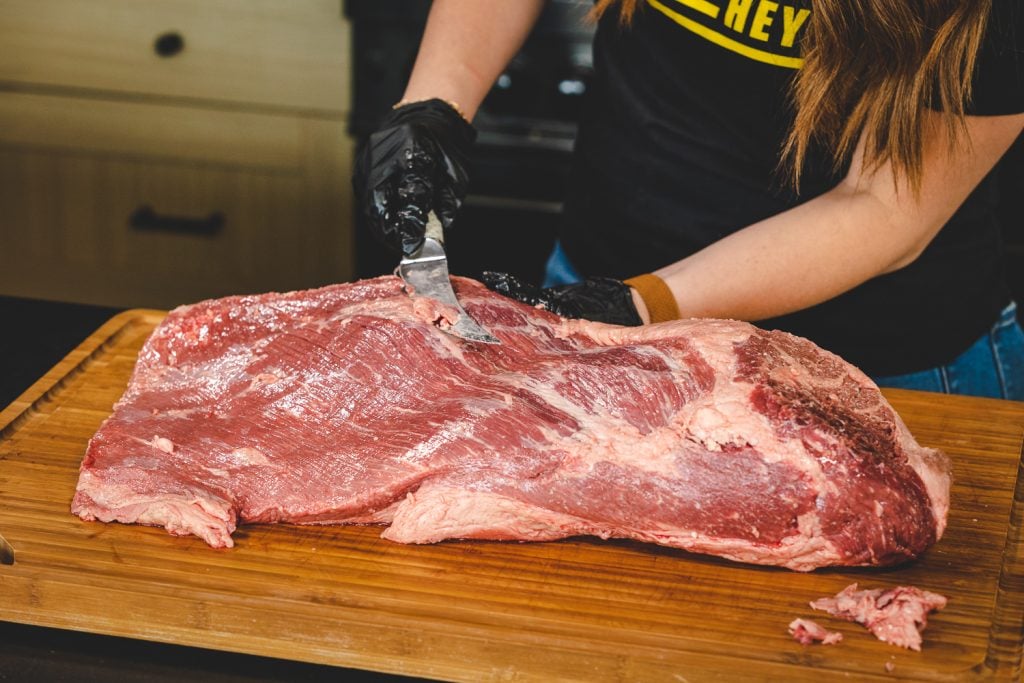
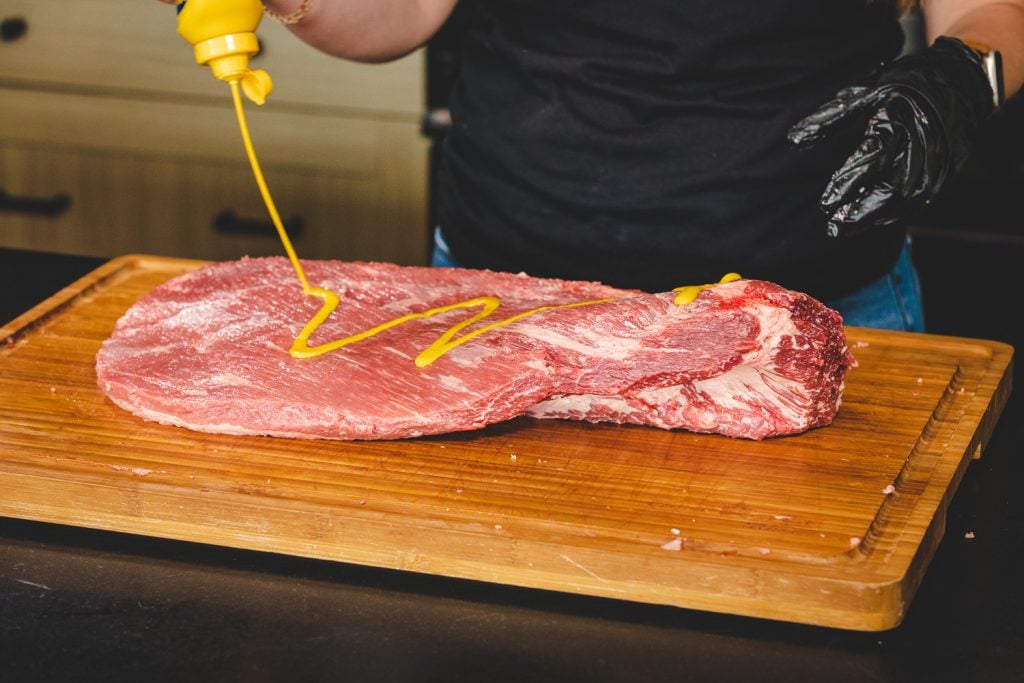
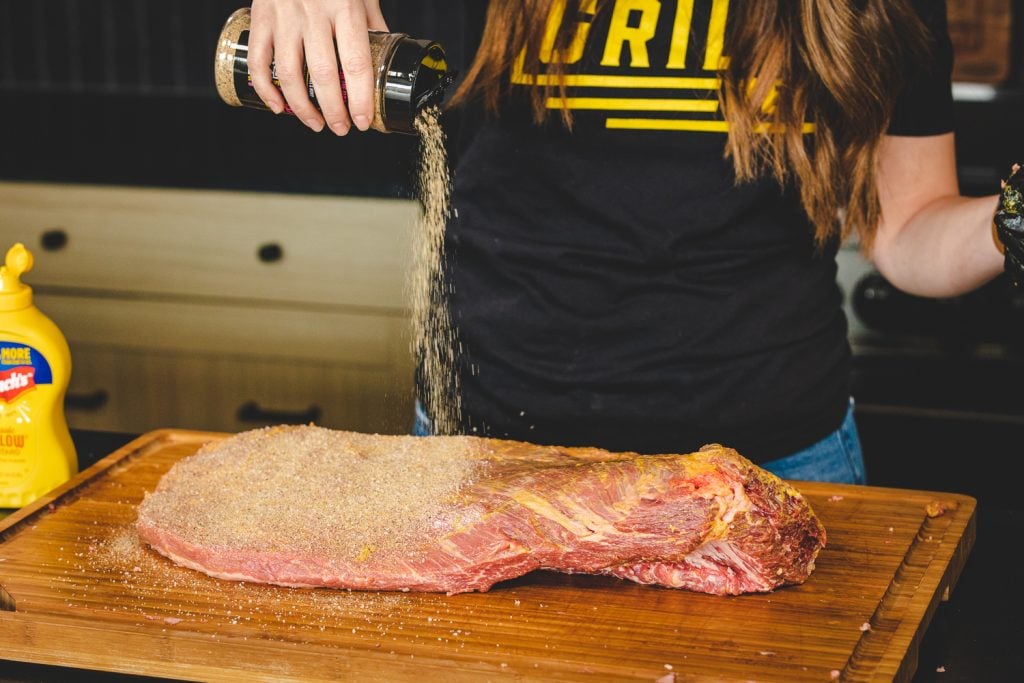
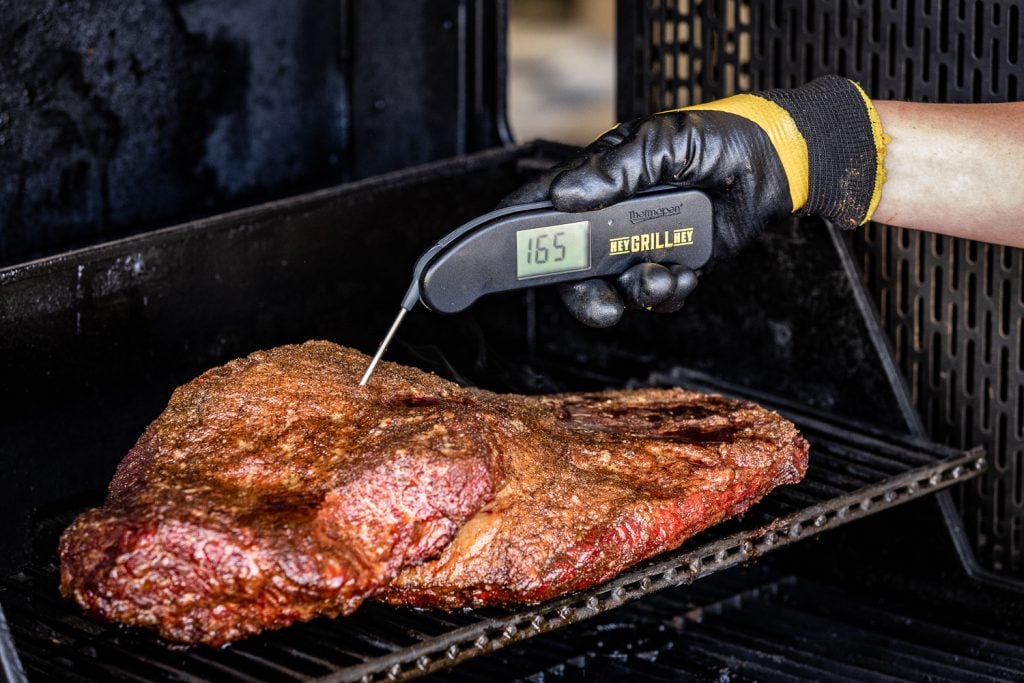
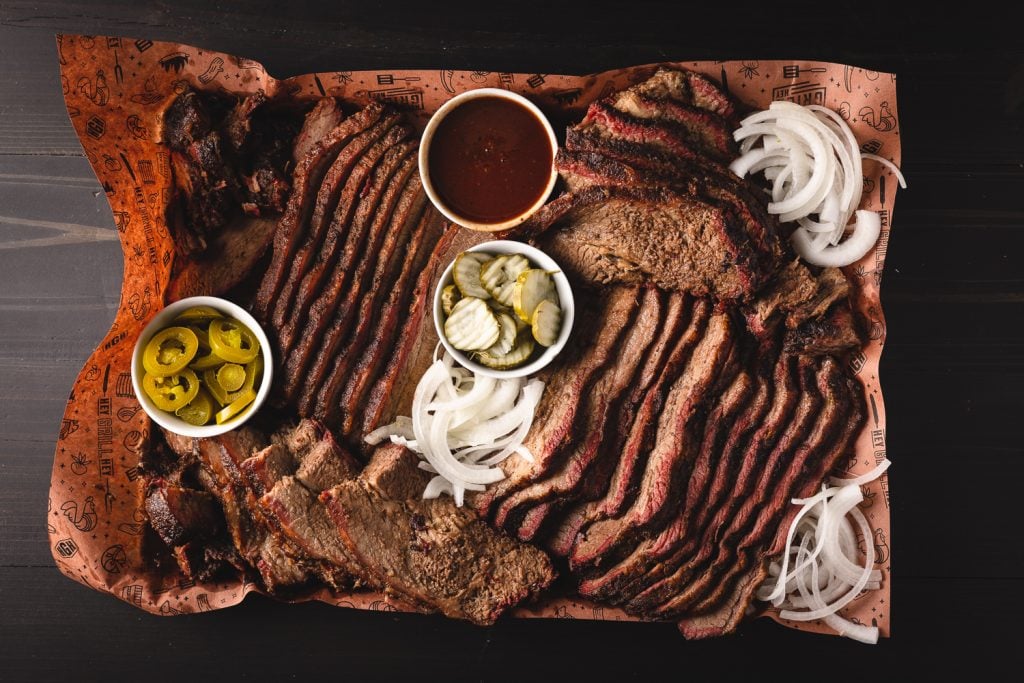

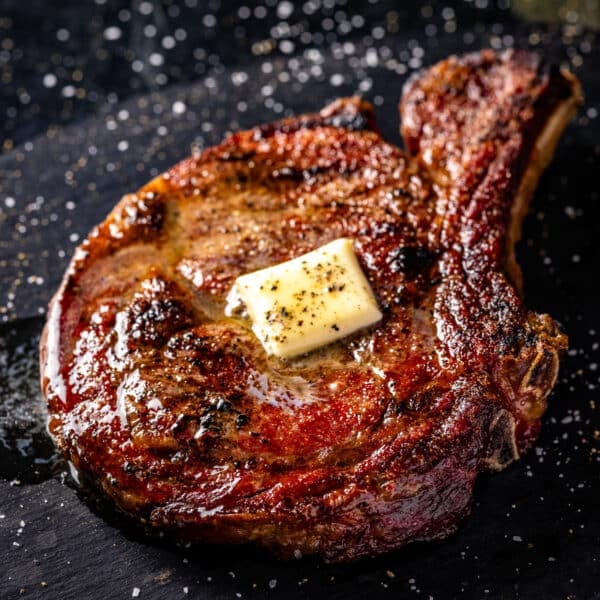
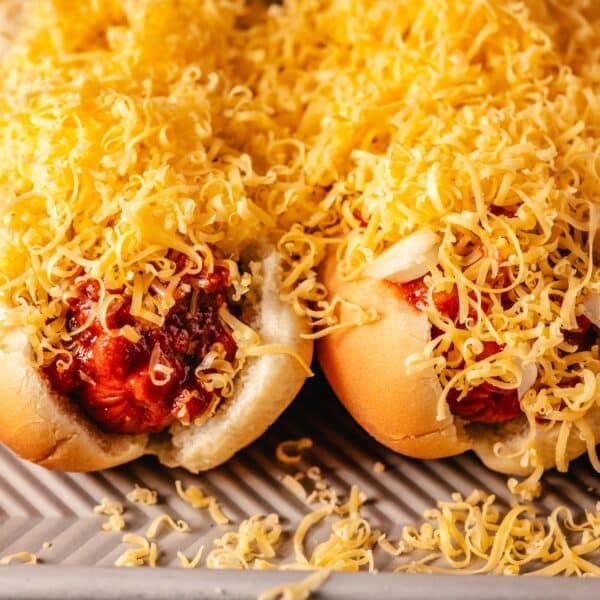
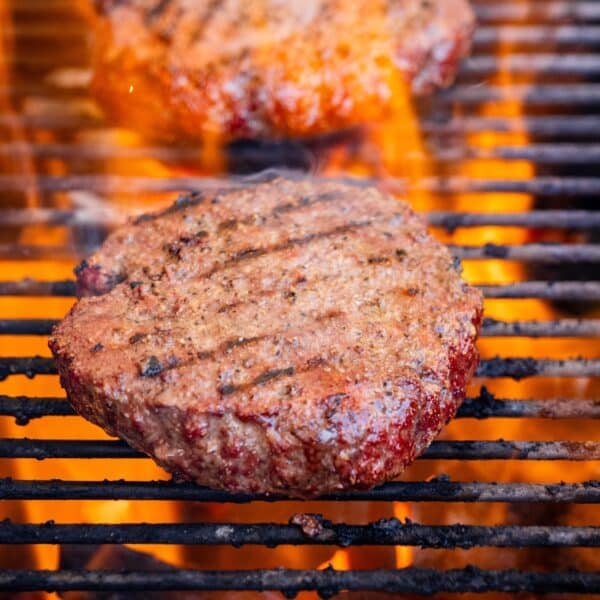
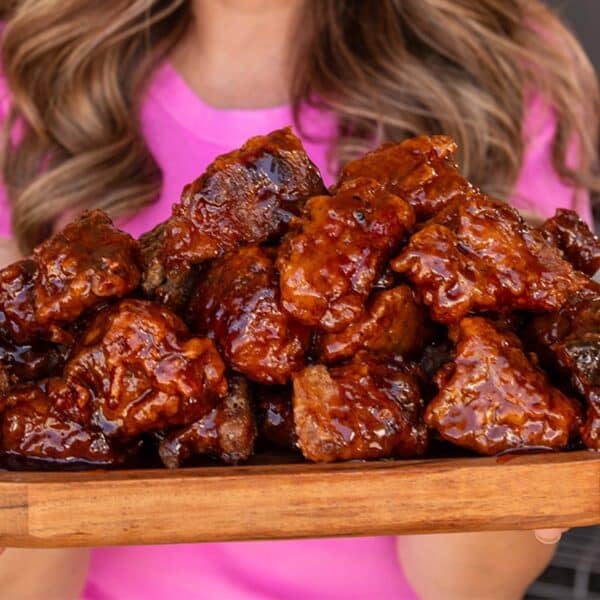





Hello
The 12-16 hours does that include the rest time or is that the cook time without the rest time.
Great article, just one point. I generally like to spritz my meat, but I don’t spritz brisket because I think overall that the spritzing can interfere with the bark; while we want the meat to be juicy the bark has to be dryer and should be cooked to a mild yellow color. The spritzing can get in the way. As an alternative, one can drizzle beef tallow (made of course from the rendered fat trimmings) on top; it can then render down thru the bark and into the meat. Just a thought; I am grateful for all you have contributed and wish you all the best in your career for the future.
I have a smaller wood pellet smoker and wanted to try doing just the point since I was space constrained. I followed your instructions to the letter – including the rub recipe – and at slightly more than 12 hours I ended up with a perfect brisket. One question though: I set my heat at 225 for the entire process. Should I have increased heat once I was using a crutch? I feel like if I had done just a flat I would have ended up with a dry piece of meat.
Great information and wonderful videos. I’m certain this will really help us. But during the initial or first phase, what is the temperature you have your smoker set at? We have a Traeger smoker. It would be good to have the temperature for each phase.
Hey, great question. I typically smoke it around 225 for the first smoke.
Great, thorough tutorials! Thank you! I have a question. If I need to smoke the brisket a few days in advance due to time constraints, can I freeze it in the butcher paper, for a couple days, pull it out the day of, slice it for the group (its for a team dinner for high school football), and then warm it up the evening of the event?
You left nothing out ! Your article contains every tip I learned in 5 years of searching recipes, watching videos and smoking brisket. Also learned another reason to place a water bath on the smoker besides moisture. Did not know the water/liquid helps for more smoke flavor to penetrate the brisket. Thank you!
I’ve used your recipe many times over for smoked brisket. It is always turned out great and now I’m gonna go to guy when they want brisket smoked. Thanks for your info and your instructions.
I tried to make a brisket according to the direction but it was at temp in 11 hours I dont know what I did wrong used both the pit boss internal probe and manuel it was 15 lbs came out dry